Upgrading the current machine mechanical software to improve the machine capabilities can process wafer with double die orientation

The paper discusses the study and challenges in the Die Attach process, brought by product structure criticalities and the requirement of MEMS product. Upgrading the current machine mechanical sand software to improve the machine capabilities and overcome the product structure criticalities such; us 30mm accuracy of Die Placement, can process Wafer with double Die Orientation 0° and 180° bonding and can detect for wrong die Orientation, and lastly can process thin substrate 130mm. After the machine upgrades, a Statistical validation using Two Proportion tests was used to help validate the machine performance effectively. The new upgraded machine has the same capability and performance of the new die attach machine model, therefore the upgrade and enhance the old model Die Attach machine is effective and successful.
Introduction
MEMS stands for Micro Electromechanical Systems, which is a technology that in its most general form can be defined as miniaturised mechanical and electro-mechanical devices and structures that are made using the techniques of microfabrication.
MEMS, as shown in Figs 1 and 2, are ultra-compact systems composed of micro-mechanical components such as sensors, actuators and electronic circuits on a silicon wafer using the microfabrication technology of the manufacturing technology. Typically, the architecture of a MEMS package is composed of 2 kinds of silicon die: (1) MEMS die which is fabricated with the microscopic moving parts and (2) the ASIC die that contains the functional circuit for the MEMS. The critical physical dimensions of MEMS devices can vary from well below one micron on the lower end of the dimensional spectrum, all the way to several millimetres.
Likewise, the types of MEMS devices can vary from relatively simple structures having no moving elements, to extremely complex electromechanical systems with multiple moving elements under the control of integrated microelectronics. Due to the complexity of the package, there is a need to upgrade the current Die attach machine to meet the product requirement.
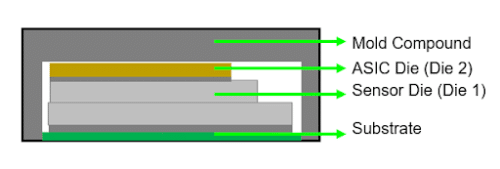
Experimental Details
Due to product structure criticalities, most MEMS products are processed using the latest Die Attach machine model. With the capability of 30mm accuracy of Die Placement, it can process Wafer with double Die orientation 0° and 180° bonding and can detect for a wrong die orientation and lastly can process thin substrate 130mm.
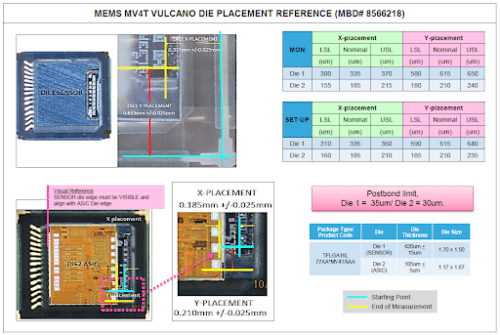

The old Die Attach machine model such as ASM383 die attach machine is not capable to process with Die Orientation 0°and 180° bonding, which can lead to wrong die orientation issue. The machine also needs to improve the detection for wrong die orientation. Also, the machine work holder needs to enhance to process thin substrate (130μm) to prevent the Damage Substrate problem.
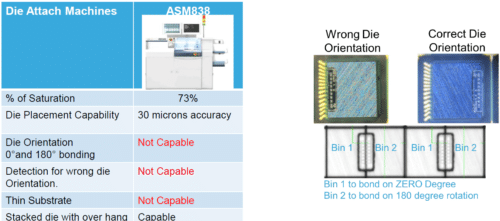
In order to meet the MEMS product requirement in Die Attach, need to upgrade and enhance the old model Die Attach machine capability, below the machine activities to overcome the criticalities of MEMS refer to Table 1.
Table 1. Activities to overcome the criticalities of MEMS.
| Criticality | Potential defect | Action |
| Wafer die orientation 0°and 180° bonding | Wrong Die Orientation
Shifted Map |
|
| Thin substrate 130μm | Damaged/
crumpled leadframe |
Upgrade the workholder – Installed roller at
Workholder to compensate the substrate warpage. |
| Die placement
< 30 microns |
Misplaced die |
|
After the mechanical and software upgrade a machine test was performed to check the machine accuracy in terms of die placement. A different test scenario was done and measured the actual die placement X and Y axis and the die theta or orientation.
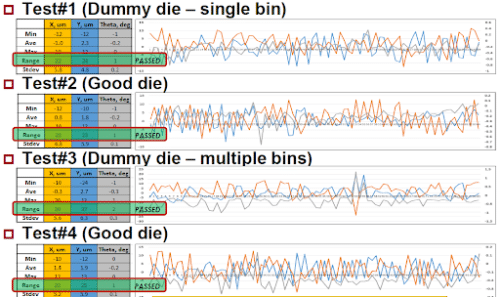
Results and Discussions
After the completion of machine upgrade and enhancement, a statistical validation using two proportion tests was performed to check the effectivity of the actions. First statistical validation upgrades the ASM838 to a new version that is capable to bond the wafer with Die Orientation 0°and 180° bonding. The statistical result is shown a 95% confidence level. There is a significant difference between the new upgraded ASM838 that is capable to process wafers and Die Orientation 0°and 180° bonding.
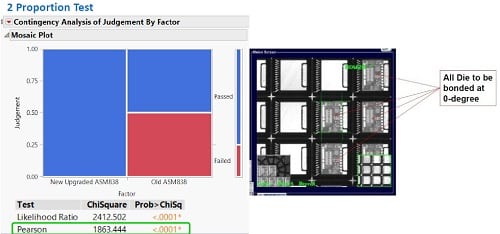
The second Statistical validation does the upgraded or new version of ASM838 is capable to detect the Wrong Die Orientation at Post Bond Inspection. The statistical result is shown at a 95% confidence level, there is a Significant difference the New upgraded ASM838 is capable to detect Wrong Die Orientation during post bond inspection.
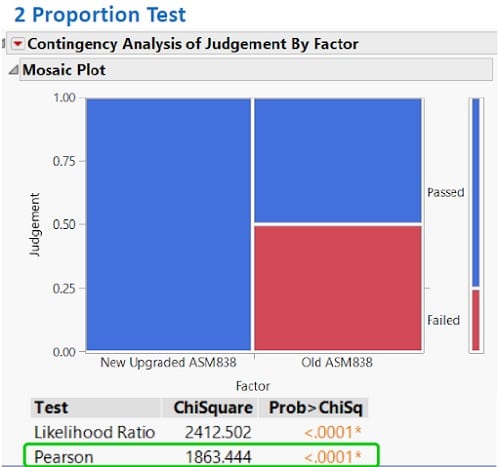
Lastly, the third Statistical Validation, does the installation of an additional roller in the work holder will reduce the occurrence of Damaged substrate. The statistical result is shown at a 95% confidence level, there is NO Significant difference the New installed roller in ASM838 can reduce occurrences of Damaged Substrate.
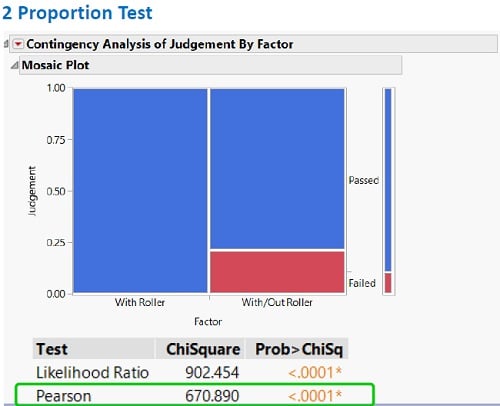
Conclusion
The overall practical conclusion is the new upgraded and enhancement on ASM838 die attach machine is capable to process MEMS package, can overcome the product structure criticalities such us 30um accuracy for Die Placement, can process Wafer with double Die Orientation 0°and 180° bonding and can detect for wrong die Orientation, and lastly can process Thin Substrate130um. The new upgraded machine has the same capability, and performance of the new die attach machine model, therefore the upgrade and enhance the old model Die Attach machine is effective and successful.












